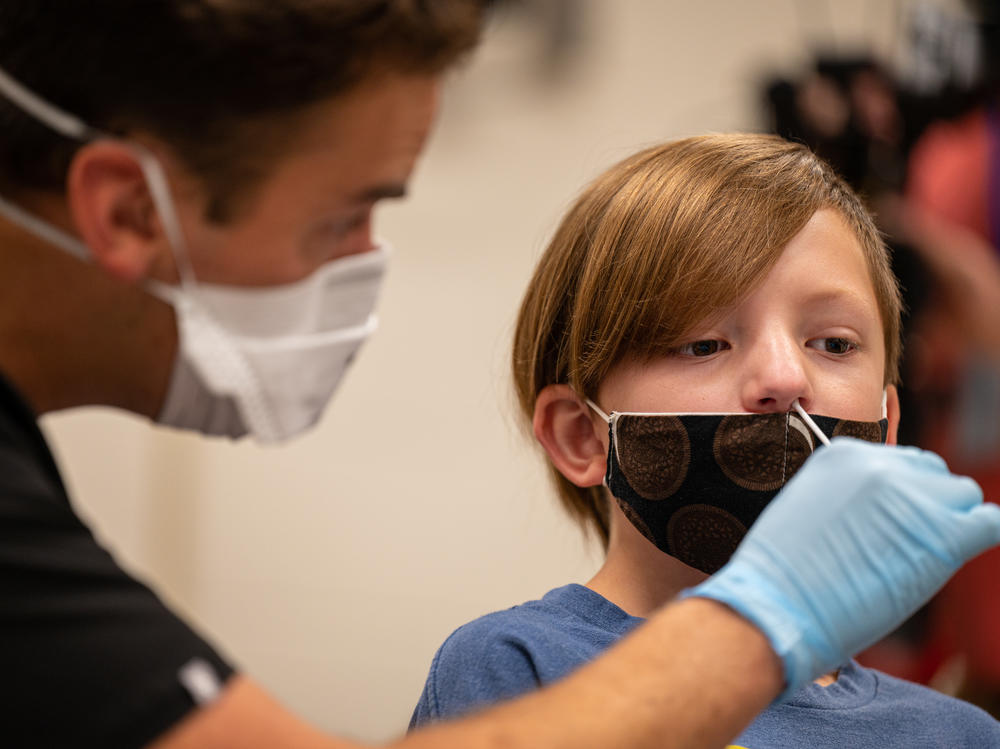Section Branding
Header Content
New CDC guidance encourages more testing to limit school quarantines
Primary Content
At a White House briefing on Friday, Rochelle Walensky, director of the Centers for Disease Control and Prevention, said schools should limit quarantines by requiring testing for unvaccinated close contacts of a confirmed COVID-19 case.
It's a practice known as "test to stay."
"In the 'test to stay' protocol, there's increased testing of close contacts after a COVID-19 exposure, and that testing needs to be at least twice in the seven-day period after exposure," Walensky explained. "If exposed children meet a certain criteria and continue to test negative, they can stay in school instead of quarantining at home."
The announcement elevates and updates existing guidance that some schools around the country have already been following. It could save, collectively, tens of millions of school days for students – assuming the typical 10- or 14-day quarantine – as the omicron variant spreads in the United States.
Walensky cited two new CDC studies conducted in Los Angeles and Lake County, Ill., providing evidence that so-called "test to stay" is effective in limiting the spread of COVID-19 in schools that have masking policies. Students or staff who have been exposed are monitored for symptoms as well as being tested; they are allowed in school only if asymptomatic.
In the Los Angeles study, 1,635 schools that did not use "test to stay" lost an estimated 92,455 in-person school days to quarantine between Sept. 20 and Oct. 31. No days were lost to quarantine among the 432 schools using "test to stay". And the incidence of COVID-19 was similar between the two groups of schools.
Alena Zachery-Ross is the superintendent of schools in Ypsilanti, Mich. Her district adopted a "test to stay" policy as of the beginning of this school year. She said she's heard of students in neighboring districts quarantining multiple times and missing 30 school days or more.
"I have nurses doing testing every day, Monday through Friday from 9 to 4," she said. "We wanted to take that barrier away from parents, like, how do you get off work, or make that appointment with CVS even in the evening?"
Her priority is student learning time. But, she says, there are wrinkles.
Some of her students choose to stay home anyway when exposed because of fear of the virus or hesitancy about the test itself. "A lot of people are nervous about being tested ... They're not sure what's in the swab, and they don't feel comfortable. So they're out of school."
And it is a huge commitment of resources and time for schools to offer so much testing – resources and time that are in short supply, as schools around the nation are reporting record staff shortages and burnout. This will be the major barrier for "test to stay" policies to overcome if they are to spread widely.
Copyright 2021 NPR. To see more, visit https://www.npr.org.

